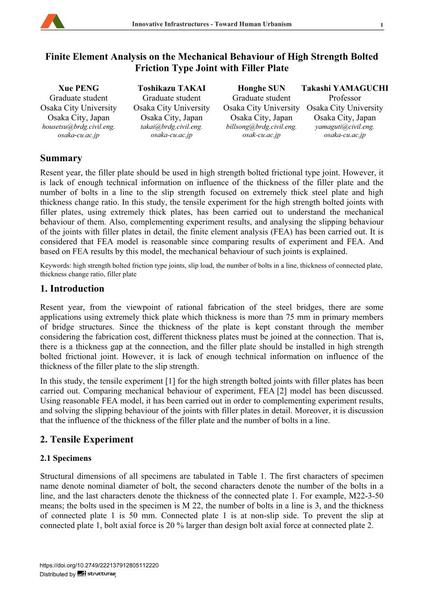Finite Element Analysis on the Mechanical Behaviour of High Strength Bolted Friction Type Joint with Filler Plate

|
|
|||||||||||
Bibliografische Angaben
| Autor(en): |
Xue Peng
Toshikazu Takai Honghe Sun Takashi Yamaguchi |
||||
|---|---|---|---|---|---|
| Medium: | Tagungsbeitrag | ||||
| Sprache(n): | Englisch | ||||
| Tagung: | 18th IABSE Congress: Innovative Infrastructures – Towards Human Urbanism, Seoul, Korea, 19-21 September 2012 | ||||
| Veröffentlicht in: | IABSE Congress Seoul 2012 | ||||
|
|||||
| Seite(n): | 1635-1642 | ||||
| Anzahl der Seiten (im PDF): | 8 | ||||
| DOI: | 10.2749/222137912805112220 | ||||
| Abstrakt: |
Resent year, the filler plate should be used in high strength bolted frictional type joint. However, it is lack of enough technical information on influence of the thickness of the filler plate and the number of bolts in a line to the slip strength focused on extremely thick steel plate and high thickness change ratio. In this study, the tensile experiment for the high strength bolted joints with filler plates, using extremely thick plates, has been carried out to understand the mechanical behaviour of them. Also, complementing experiment results, and analysing the slipping behaviour of the joints with filler plates in detail, the finite element analysis (FEA) has been carried out. It is considered that FEA model is reasonable since comparing results of experiment and FEA. And based on FEA results by this model, the mechanical behaviour of such joints is explained. |
||||
